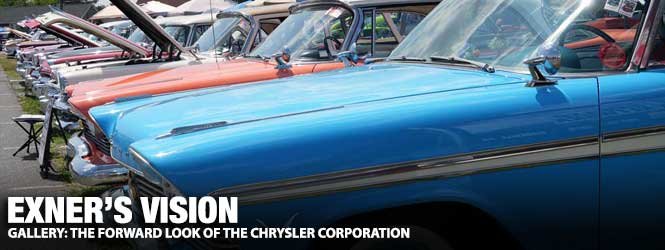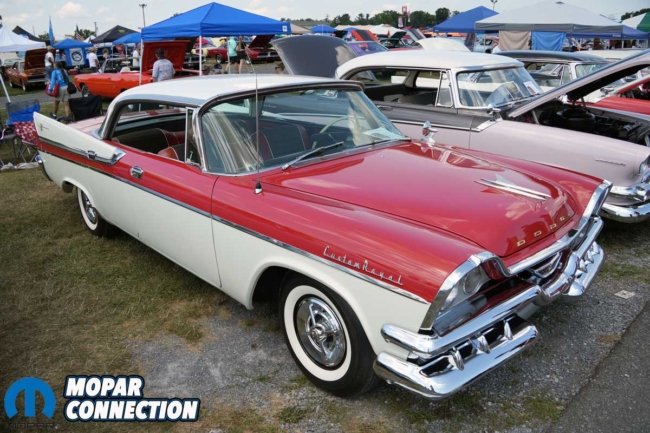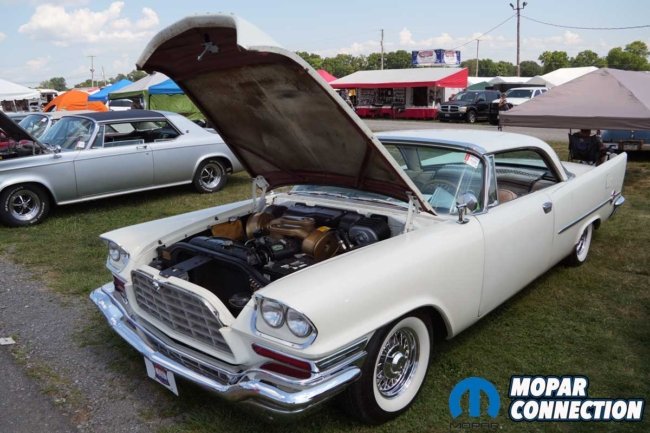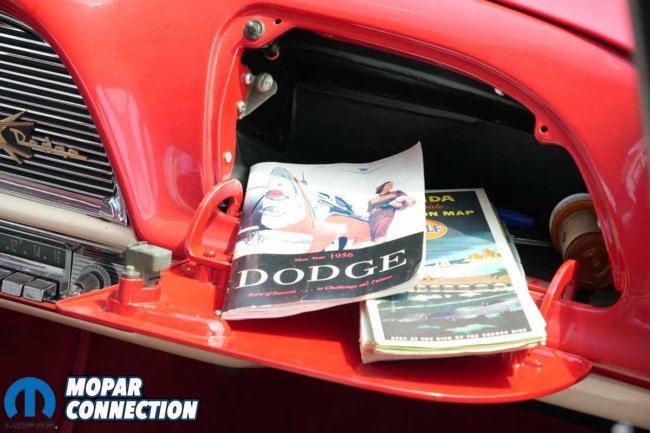
The 1950s marked a period of prosperity for post-WWII Americans. Eisenhower was in the Oval Office, rock and roll was on the radio, and the baby boom was on. Although the U.S. was involved in the Korean conflict in the early fifties, and lingering social problems and the Cold War with the Soviet Union would escalate as the 1960s approached, the Eisenhower era would be a sound era for most, and the auto manufacturers took advantage of the American luxury.
The “Forward Look” cars are remembered for their significant impact on automotive design and technology, helping to shape the industry’s future in the latter half of the 20th century. Each of the five Chrysler Corporation manufacturer lines (Plymouth, Dodge, Desoto, Chrysler, and Imperial) received the Forward Look treatment, a defining series of automobile designs introduced in the mid-1950s.
The 1955 models were officially introduced with the Forward Look in the fall of 1954. These cars represented a significant departure from the conservative designs of the previous decade and were characterized by their futuristic, streamlined appearance.
Chrysler’s chief designer, Virgil Exner, plucked from Studebaker in 1953 to resurrect the Chrysler Corporation’s sagging sales profits and plummeting market share, was the mastermind behind the Forward Look. His designs, emphasizing longer, lower cars and bold use of chrome, set the stage for a new era in automotive design. The Forward Look cars’ bold, sweeping lines and prominent tailfins were a testament to his visionary approach.
The first year of the Forward Look cars resulted in increased sales and profits over the 1954 model year. However, the numbers were only slightly better than the 1953 profits. In 1956, profits and sales dropped significantly, but in 1957, the pinnacle year of the Forward Look cars, the Chrysler Corporation achieved significant sales and earned its greatest profits. However, quality control problems on the 1957 vehicles would financially overwhelm the corporation in the future.
A recession in 1958 dropped sales to the lowest point during the Forward Look era. The recession, combined with the quality control concerns from a year earlier, resulted in the Chrysler Corporation losing 40 million dollars. 1959 was better, with vehicle sales rising, but Chrysler still lost money. In 1960, the sales numbers were up, and Chrysler was back in the black.
Sales dropped again in 1961. The styling cues of the 1961 cars were a little strange, but the downsized 1962 Plymouths and Dodges have been noted as downright ugly. Accordingly, the 1962 Chrysler Corporation cars sold poorly. Sadly, even with all the excitement around the Forward Look cars, the Chrysler Corporation continued to lose market share to General Motors and Ford.
Despite the concerns about the Chrysler Corporation’s profits and market share, the Forward Look cars were a testament to the innovative spirit of the time. The early Forward Look cars were equipped with 354 and 392 Hemi engines, while the later versions came with wedge engines.
Chrysler introduced the push-button automatic transmission, a novel and user-friendly feature during that era. The “buttons” were placed on the left side of the steering wheel on the dash. The design allowed for a mere push of a button to switch gears. These cars were not just about looks but also about innovative technology, inspiring the automotive industry with their advancements.
Chrysler’s commitment to safety was evident in the Forward Look cars. Beyond their improved styling cues, these cars featured enhanced braking systems, improved suspension technologies, and increased driver visibility. The high-end models even offered luxury options like power steering, power brakes, and advanced sound systems, ensuring a comfortable and safe driving experience and setting a new standard for automotive safety.
Air conditioning was another safety option available with the Forward Look cars. Although clumsy by today’s standards, the R12 AC systems had components similar to modern cars. The massive compressor, condenser, and receiver dryer filled the engine bay, and a restriction, evaporator, and blower motor filled a portion of the trunk. Fresh air entered ducts on or around the vehicles’ C-pillar areas. The cool, clean, and dehumidified air exited the evaporator box via grills cut into the rear package tray.
Chrysler’s marketing campaigns highlighted the futuristic design and advanced technology of the Forward Look cars, capturing the public’s imagination. By embracing the Forward Look, Chrysler revitalized its brand, attracting younger buyers and setting styling trends across the industry. The Forward Look cars set a new standard for automotive design, influencing competitors to adopt similar styles and features.
The Forward Look era, lasting through the 1961 model year, profoundly influenced subsequent car designs, cementing Virgil Exner’s reputation as a visionary automotive designer. Chrysler’s Forward Look cars remain iconic symbols of 1950s automotive design, characterized by their bold, futuristic aesthetics and technological innovations.





























































